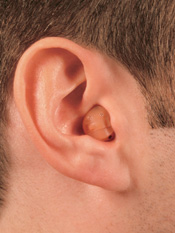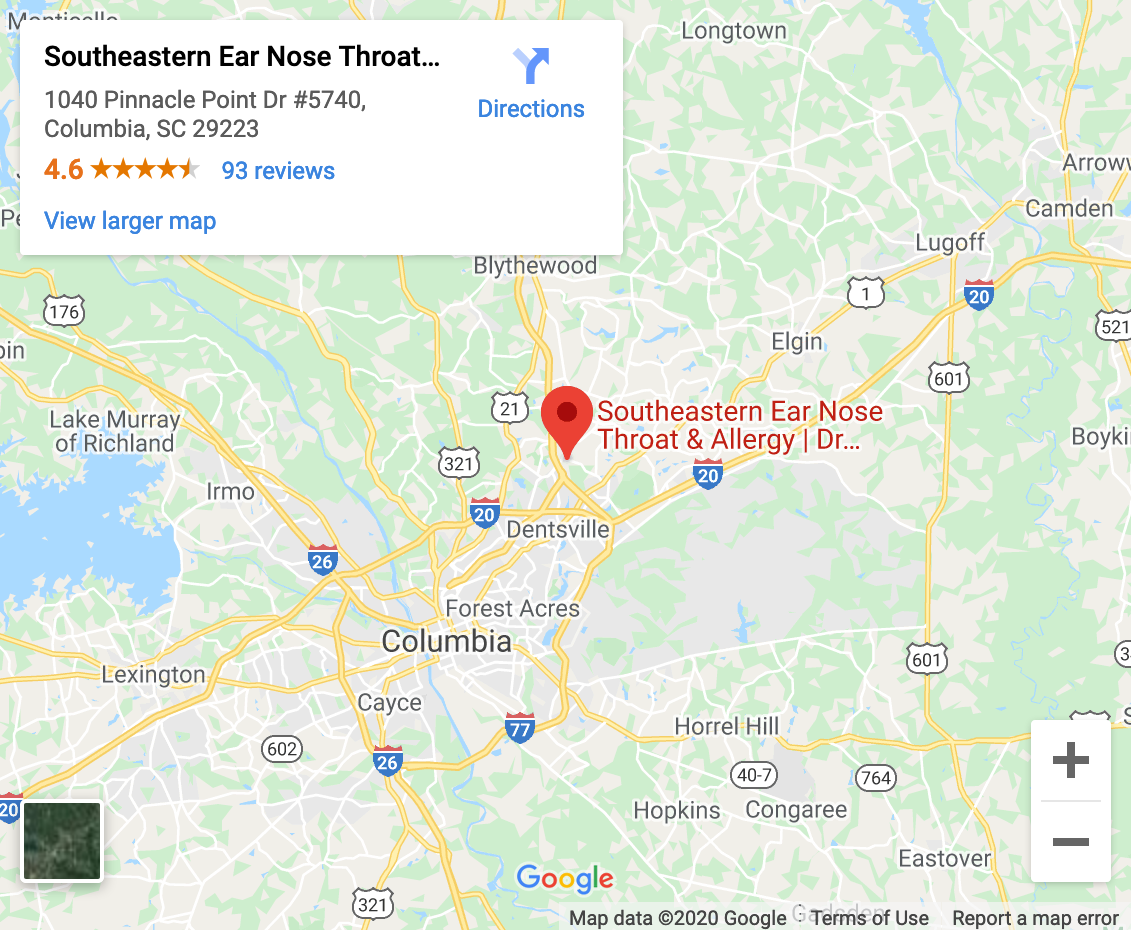Services: Audiology & Hearing
Communication
Noise
Speech Delay
Normal Activities
Office Hours
| Mon - Thur | 8:00 - 5:00 |
| Fri | 8:00 - 4:00 |
Allergy Shot Hours
| Mo, Tu, Th | 8:10 - 4:45 |
| Wed | 1:00 - 4:45 |
| Fri | 8:10 - 3:45 |
Make An Appointment
We look forward to caring for you!
(803) 509-7200
Visit Our Office
Audiology
Audiology involves the identification, evaluation and prevention of hearing loss, as well as rehabilitation of hearing impairments.

What is an Audiologist?
An audiologist is a professionally trained individual who specializes in promoting hearing wellness through education, identifying hearing and balance problems, interpreting diagnostic tests and providing rehabilitation plans by recommending and fitting hearing aids and assistive devices. Our service is ongoing – our team strives for excellence in long term rehabilitation and service.
What is an Audiological Evaluation?
At Southeastern ENT, we believe an audiological evaluation begins with establishing a relationship with our patients. The results of the comprehensive audiological evaluation will be reviewed with our patients and will provide them with answers to all their questions, including possible causes of their hearing loss and best treatment options.
What Equipment and Tests Are Used for Adults or Children In a Comprehensive Evaluation?
Initial testing is done with an audiometer. It produces sounds at different pitches and intensities through headphones that help the audiologist measure hearing thresholds. It also provides a way to determine speech understanding in both quiet and noisy settings. This device enables us to determine the degree and type of hearing loss. Other, more specialized testing includes the following:
- Tympanometry & Acoustic Reflex Testing identifies middle ear fluid, evaluates eustachian tube function, and helps diagnose auditory lesions.
- Otoacoustic Emission Tests (OAE) evaluates cochlear function by using sound to stimulate the cochlea. OAE is excellent for assessing the hearing of children and newborns.
- Visual Response Audiometric (VRA) is a “fun” method of pediatric testing allowing the child to participate in play activity while the audiologist uses visual reinforcement as the child responds to different tones.




- Trouble hearing others in meetings, restaurants, at work or church
- Frustration in understanding what a grandchild says to you
- Trouble hearing your doctor during an exam
- Difficulty hearing the television
- Have to ask others to “repeat” themselves
- Family & friends get annoyed because you misunderstand or make inappropriate responses
- Dizziness & ringing in the ears
- Child with frequent and persistent ear infections
- You or family members can’t understand your child’s speech
Treatments and Solutions for Hearing Loss
Two primary solutions for hearing loss include:
- Hearing Aids: BTE (behind the ear), ITE (in the ear) & CIC (completely in the canal)
- Improved Communication Techniques:
- Ask people to speak slower, clearer, and slightly louder.
- Avoid conversations across rooms.
- Choose environments with “quieter” background noise.
- Face people…and ask them to face you when speaking.
- Rephrase the speaker’s message to ensure understanding and an appropriate response.
- Explain to people how they can communicate more effectively with you. For example say: “It would really help me a lot if you would speak slower so that I can understand what you’re saying.”
Hearing Aid Solutions
Hearing aids do not cure or restore hearing to completely normal levels. They are, however, excellent in “rehabilitating and maximizing” an individual’s residual hearing and listening capability to improve one’s quality of life.

What is a Hearing Aid?
A hearing aid is an instrument that, when properly chosen and fitted, can improve hearing and listening capability which in turn…improves quality of life.
What are the Various Types of Hearing Aids?
There are several different “types” of hearing aids available today, and since no one hearing aid fits everyone’s needs…it is important that each individual be properly evaluated and diagnosed. It is imperative that the right hearing device be selected for each individual based on their hearing loss and ability to care for the device.
Today’s hearing aid choices include:
- Behind The Ear (BTE) Aids – including much smaller “miniature” BTE models which are barely visible and carry similar processing abilities
- Custom Hearing Aids
- Completely in the Canal (CIC) Aids
- In The Ear (ITE) Aids
How Do They Work?
Behind The Ear (BTE) hearing aids fit comfortably behind the ear and are attached to the ear with plastic tubing. This tubing is secured in place by an earmold that has been created and customized to your ear by taking impressions of the shape and size of your ear (s). The BTE is today’s most popular hearing aid due to flexibility and a wide range of options. The BTE works well for most hearing losses ranging from mild to profound. Recently, “miniature” BTE hearing aids have become popular as they do not require a customized mold and fit comfortably in the ear canal without causing an occlusion effect encountered by some patients who are fit with molds. These miniature BTE hearing aids are very popular and perform well for most patients without being visible to most others in public places and work.
Custom Hearing Aids are “customized” (built) for your ear and your specific hearing loss needs. Our Audiologist is an expert at creating an impression of your ear(s) and then ordering an aid from the manufacturer to your exact specifications.
Completely in the Canal (CIC) is today’s smallest custom made hearing device with a shell that is designed to fit deep inside your ear canal in order to be nearly invisible. It is best suited to mild to moderate hearing losses since it has limited features.
In The Ear (ITE) styles are similar to CIC aides but fill most of your outer ear. These are the largest hearing aids. The full shell provides access to a telecoil use and also allows for multiple listening programs. The ITE hearing aid is most effective for mild to moderately severe hearing loss.
What is Binaural Hearing Loss?
It is not uncommon for people to have hearing loss in both ears – otherwise known as binaural hearing. This requires two (dual) hearing aids to enable better hearing and to eliminate “flat or dull” sounds that are common when only one hearing aid is worn.
What are the Common Advantages of Bilateral Hearing Aids for Binaural Hearing Loss?
Localization or determining where sound is coming from. Localization is only possible with “two ears.” Safety issues are a common concern with hearing loss such as knowing where warning sirens are located, approaching traffic, etc. Having bilateral hearing aids greatly improves hearing for these types of situations.
Hearing in Noise refers to how well your brain can selectively listen to a desired speaker/talker and filter out background noise at the same time. Using two ears does this most effectively.
Spaciousness or High Fidelity Sounds quality of sound).This defines the ability to understand speech clearly, particularly in challenging/noisy situations. Binaural hearing makes this easier and less stressful…so you can enjoy natural sound quality. It also allows you to hear people speaking to you from either side of your head.
How To Ensure Customized Fit, Comfort and Ongoing Maintenance
Correct and comfortable physical fitting and care is a primary concern of every hearing aid wearer. Hearing aids should fit comfortable in or behind the ear and should not be so loose that they fall off. Nor should they be so tight that they cause ear soreness. Our Audiologist has years of expertise in testing, diagnosing and fitting hearing aids.
Daily Maintenance is important to avoid problems that typically occur from moisture or accumulated earwax. We will teach you how to properly care for your hearing aid to ensure many years of satisfactory service.
We look forward to caring for you!
(803) 509-7200






